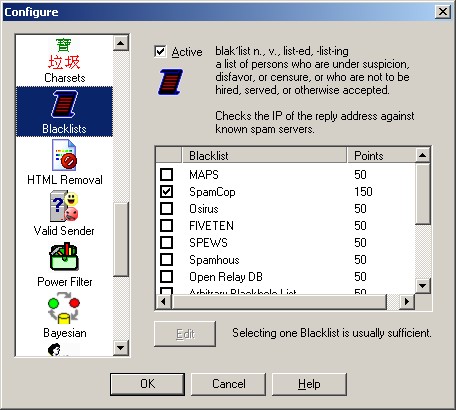|
|

|
The BlackList Analyzer uses free blacklist databases to check whether the e-mail in question was sent by a known spam server. These databases allow Spam Sleuth Enterprise™ to look up an IP address and determine whether it came from a known spam sending machine.
blak'list n., v., list-ed, -list-ing - a list of persons who are under suspicion, disfavor, or censure, or who are not to be hired, served, or otherwise accepted.
You may be tempted to turn on all of the black lists, but it really isn't necessary. Most of them contain the same or at least similar information. Some of them are subsets of the others. It would be better to increase the number of points assigned when the one blacklist reports that the e-mail was sent by a known spam server. By default, Spam Sleuth Enterprise™ uses SpamCop, which seems to be one of the more accurate lists
These lists are built in different ways. Some of them use spam traps where they put a brand new e-mail address out on a web page and then "trap" everybody who sends to that e-mail. Some are built by taking a weighted average based on how many people send them copies of the same spam message from the same server.
Each list that you check will take 3 to 5 seconds to check if the e-mail is not from a spammer (negative response). It takes about 1 second to check if the e-mail is from a known spammer (positive response).
You can edit the number of points assigned when a blacklist reports that the IP is a known spammer.